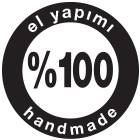Çok eski tarihlerden beri kullanılan ve savaşçının başını darbelere karşı koruyan yakın savunma araçlarından biri olan miğferler, koruyucu silah olmakla beraber, dikkat çekici görünüşleriyle devlet törenlerinde ve askeri merasimlerde ihtişam arttırıcı bir unsur olarak kullanılmıştır. Ana malzemesi metal olan miğferlerin yapımında dövme, kesme, perçin, döküm, zincir örme gibi teknikler kullanılmıştır. Ayrıca süslemelerde altın, gümüş ve taş kakma, kabartma, kumlama gibi maden süsleme teknikleri uygulanmıştır. Avrupa müzelerinde, kuşatma ve savaşlardan ele geçirilen çok sayıda Anadolu kökenli askeri araç gereç bulunmaktadır. Bu yönleriyle miğferler birçok koleksiyonda ve müzede yer almaktadır. Özellikle Viyana Askeri Tarih Müzesi, en fazla Osmanlı eserini bünyesinde barındırması sebebiyle dikkat çekmektedir.
Zafer Miğfer üzerinde bulunan desenler, 16-17. yüzyıl Osmanlı dönemine ait, Moskova Kremlin Müzesi ve Hermitage Müzesi’nde sergilenen miğferlerden esinlenilerek oluşturulmuştur. Desenler, özellikle Osmanlı döneminde kullanılan rumi ve hatai stilindedir. Alt parçasında bulunan desenler, miğferlerin kulak siperliğinden esinlenerek oluşturulmuştur. Benzer miğfer örnekleri, Fransa Louvre Müzesi, Almanya Bayerisches Armee Müzesi ve ABD Metropolitan Müzesi’nde sergilenmektedir.
Zafer Miğfer el imalatı camdan üretilmiştir ve üzerindeki rölyef desenlerin tümü, 24 ayar altın, yaldız ve eskitme boyalar kullanılarak dekorlanmıştır.
Üretim adedi 2.000 ile sınırlıdır
Helmets have been used since ancient times as a personal close defense weaponry and especially as a shield to protect the warrior's head against deathblows. Although it is a protective armament, it has been also used as an adjuvant of splendor in state and military ceremonies for its remarkable appearance. In the manufacturing of helmets mainly made of metals, techniques such as forging, cutting, riveting, casting, and chain braiding have been commonly used. In addition, metal ornamentation techniques such as gold, silver and precious stone inlaying, embossing, sandblasting techniques have also been applied. In European museums, there are a large number of Anatolian-origin military weaponry and armaments seized from sieges and wars. Several examples of similar helmets can also be found in collections and museums all across the world. For containing the most Ottoman military artifacts, the Museum of Military History in Vienna have a special place worth mentioning.
The patterns on the Zafer Helmet draw their inspiration from the helmets exhibited in Kremlin and Hermitage Museums in Moscow, dating from the 16th-17th centuries. The patterns are of the rumi * and hatai* ornamentation and abstraction styles applied especially during the Ottoman period. The patterns on the lower part draw their inspiration from the ear visors of the helmets. Examples of similar helmets are on display at the Louvre Museum in France, the Bayerisches Armee Museum in Germany and the Metropolitan Museum of Art in the USA.
Zafer Helmet is produced from handmade glass and all the relief patterns are decorated with 24-carat gold, gilt, and antiquated paints.
*Rumi is the most commonly applied Islamic ornamentation and abstraction technique where parts of the birds and animals such as wings, beaks, paws and legs are stylized.
*Hatai is an Islamic ornamentation and abstraction technique in which the patterns are overly stylized, almost geometrical, where petals of the floral shapes usually twist inwards
Çap : 18,7 cm
Yükseklik : 32 cm
% 100 el yapımıdır.
Ürünün Menşei : Türkiye
Temizleme Önerisi : Kuru bezle siliniz
